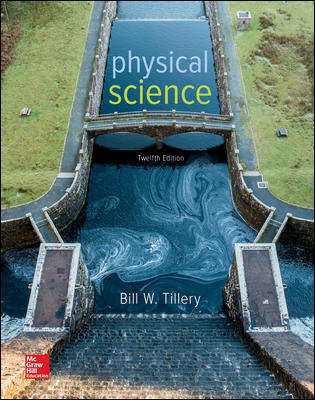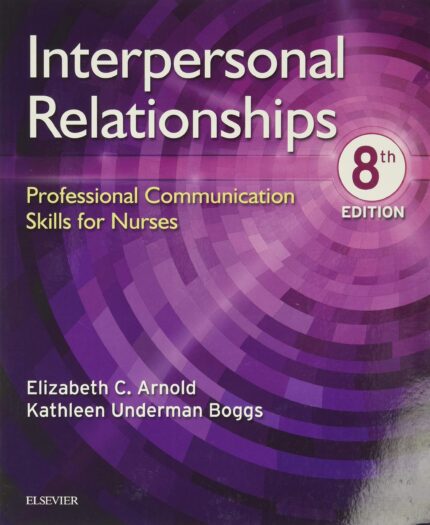Physical Science 12Th Edition By Bill Tillery – Test Bank
Physical Science, 12e (Tillery)
Chapter 4 Heat and Temperature
1) Molecules are the smallest units of matter with the characteristic properties of a substance.
2) Water beads up on wax paper because its cohesive forces are greater than the adhesive forces.
3) Temperature is a measure of the amount of heat stored in a substance.
4) The molecules of a gas are much farther apart than molecules in a solid or liquid.
5) A liquid at 20ºC is twice as hot as the liquid at 10ºC.
6) The degrees on the Celsius scale are larger than degrees on the Fahrenheit scale.
7) The nutritionist’s Calorie is really a kilocalorie.
8) The sum of all the energy of the molecules of an object is called the temperature of that object.
9) Iron heats up more rapidly than does aluminum because it has a greater specific heat.
10) Liquid water at 0ºC has to give up energy in order to become ice at 0ºC.
11) What is the temperature that is the same numerical value on both the Fahrenheit and Celsius scale?
A) 212º
B) 0º
C) −40º
D) −273º
12) The attractive forces between unlike molecules is called
A) cohesion.
B) adhesion.
C) diffusion.
D) friction.
13) What is the average body temperature of healthy humans on the Celsius scale?
A) 100º
B) 68º
C) 37º
D) 20º
14) Molecules in a solid
A) are harder than molecules in liquids or gases.
B) transfer heat to their neighbors by a process called convection.
C) have no internal energy because they are not moving around.
D) are held in nearly fixed positions by strong attractive forces.
15) The process by which solid ice vaporizes into the atmosphere without first becoming a liquid is called
A) sublimation.
B) condensation.
C) evaporation.
D) boiling.
16) When water in the air condenses and forms tiny bubbles on a cold soda can,
A) it absorbs energy from the surroundings.
B) its temperature drops sharply.
C) it transfers heat to the surroundings.
D) its temperature rises slightly.
17) In the equation: Q = mc∆t, the c represents the
A) speed of light.
B) number of calories gained or lost.
C) convection coefficient.
D) type of material.
18) The “touch” sensors our human bodies use to judge temperature operates
A) very poorly, sensing only heat flow.
B) within 5°C of the actual temperature.
C) better than most thermometers.
D) None of the answers is correct.
19) The heat needed to warm one gram of water one Celsius degree is called a
A) joule.
B) calorie.
C) Btu.
D) kilocalorie.
20) The water in a swimming pool is often cooler than the surrounding sidewalk on a sunny day because it
A) has a higher specific heat.
B) has weaker attractive forces.
C) loses heat more rapidly.
D) has a lower density.
21) Water molecules move back and forth between the liquid and gaseous phases
A) only when the space above a liquid is not saturated.
B) only at 100ºC.
C) only when the humidity is low.
D) at all times.
22) The transfer of heat that occurs when energy moves from molecule to molecule by direct contact is called
A) convection.
B) conduction.
C) radiation.
D) phase change.
23) The amount of heat needed to increase the temperature of 1 gram of a substance 1 degree Celsius is known as
A) latent heat.
B) specific heat.
C) a calorie.
D) Btu.
24) Adding heat to a substance
A) always results in a temperature increase.
B) sometimes does not result in a temperature change.
C) sometimes results in a temperature decrease.
D) None of the answers is correct.
25) The heat death of the universe is a theoretical time in the future when the universe is supposed to
A) have a high enough temperature to kill all living things.
B) have a very high temperature, vaporizing all matter.
C) freeze at a uniform low temperature.
D) use up the entire supply of entropy.














Reviews
There are no reviews yet.